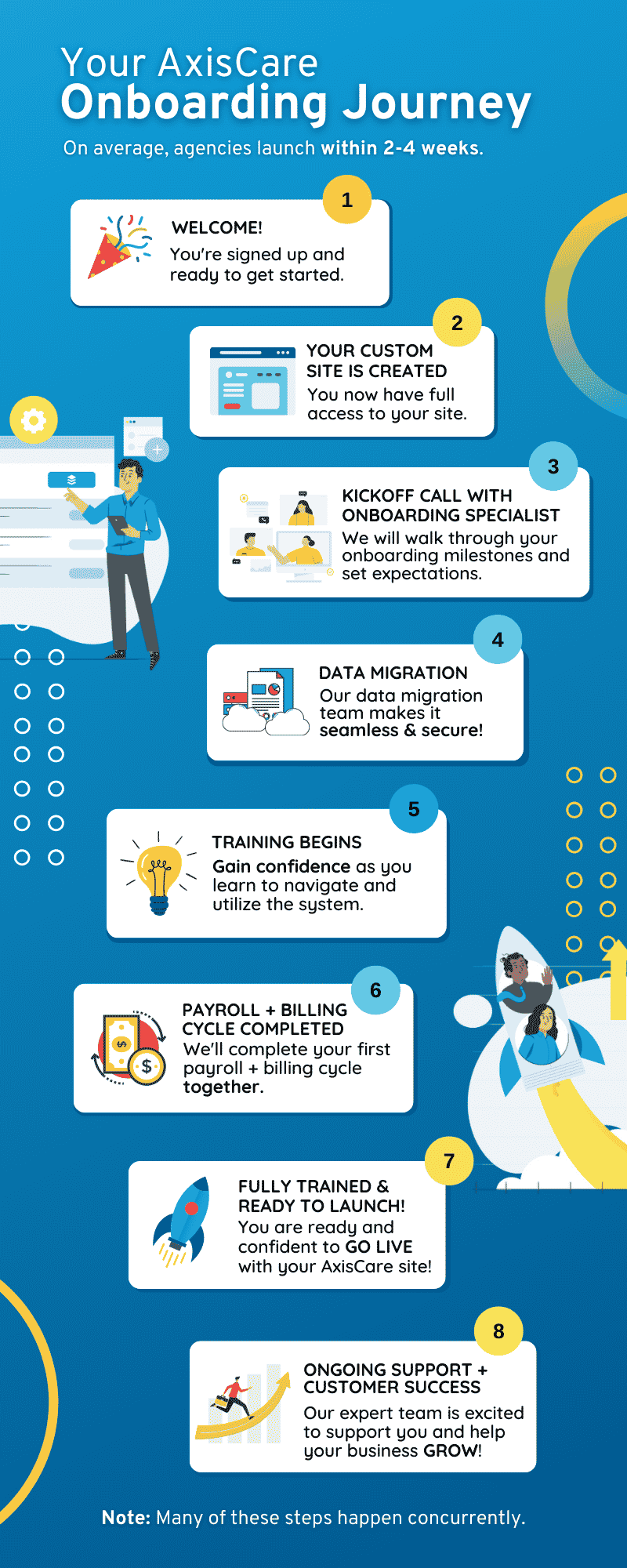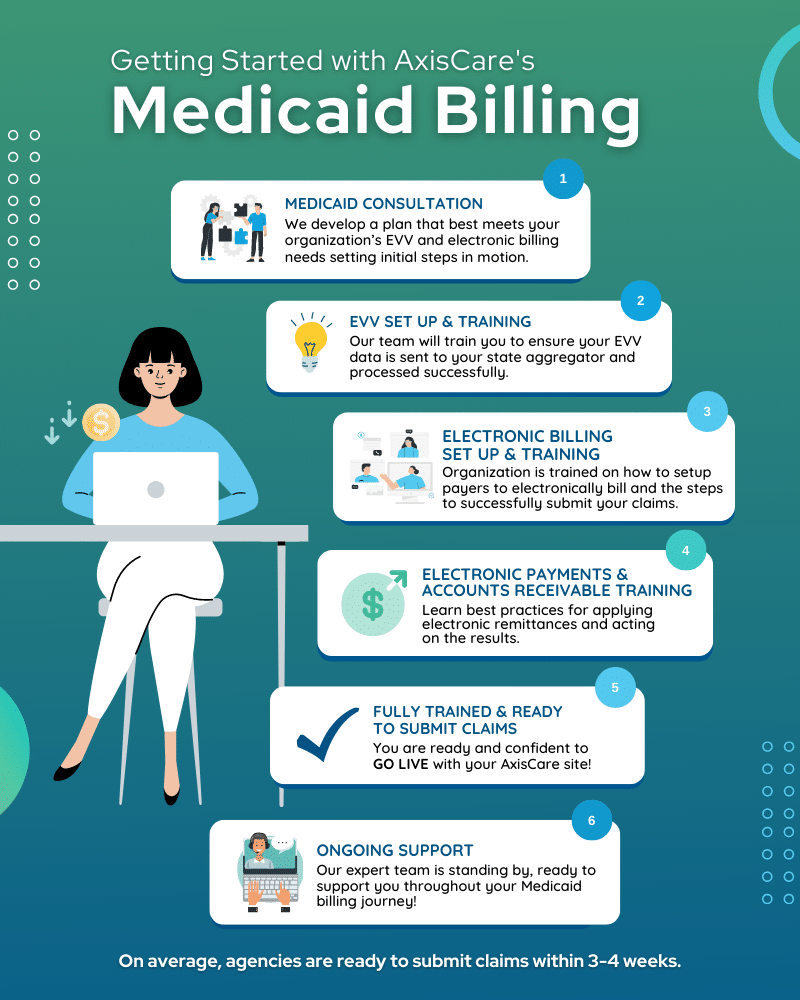While we might not have a crystal ball, we do have a wealth of data to illustrate home care industry trends. For one, demand is only forecasted to increase as time goes on: by 2034, there will be more adults over the age of 65 than children under the age of 18. Americans have expressed an overwhelming preference for receiving medical care at home, driven by a desire to age in a familiar space instead of a care facility.
As 2023 comes to a close, it’s time to set our sights on emerging trends. Which happenings in the home healthcare space should be on your radar, and which challenges are currently facing the industry? We’re here to shed some light.
Download your copy of The Future of Home Care: A 2024 Survey of the Home Care Industry & Future Trends for more data and insights.
Challenges & Restraints
Demand for home health services certainly exists. But are agencies prepared to deliver what patients need? Here are the main challenges and limitations that are facing the home care industry today.
Reimbursement & Financial Issues
Even when patients are prepared with all the right documentation, managing medical finances is a herculean task. Agencies must be prepared to address reimbursements from insurance companies, government healthcare programs, and private payers.
Additionally, as economic headwinds continue to present financial challenges for many, agencies expect to see fewer patients using private pay sources. Instead, third parties like Medicare, Medicaid, and the Veterans Affiars will likely claim a larger portion of the pie. Agencies that heavily rely on private payers should therefore look into diversification strategies should this prediction come to pass.
Workforce Shortage
The caregiver workforce is pulled tight as a drum: as the demand for home healthcare grows, the industry is up against major staffing challenges. Agencies need to both recruit and retain qualified workers, including registered nurses, therapists, home health aides, and other specialized caregivers. With caregiver turnover rates as high as they are – 77.1%, according to the 2022 Activated Insights Benchmarking Report – this challenge is expected to remain ongoing.
Workforce Regulations
Any organization that operates in the healthcare space is subject to stringent regulations, and homecare agencies are no exception. At both the federal and state level, these rules are constantly evolving, which keeps industry players on their toes.
Wage equity and transparency are hot topics at the moment, and agencies may soon need to display salary information on each job posting. Each time a regulation changes, the rules surrounding compliance and recordkeeping often shift alongside it, making it challenging for agencies to keep track of what’s expected of them.
Security & Privacy Concerns
As the industry incorporates more technology and telehealth solutions, there is a need to safeguard patient health information. Cyberattacks and data breaches happen more often than one might realize, so it’s essential to ensure secure communication between healthcare professionals and patients.
Emerging Trends in Home Healthcare
There’s plenty of innovation on the horizon in the home healthcare industry, and the following developments are shaping the future as we speak.
Telehealth & Remote Patient Monitoring
For every patient that’s monitored remotely, an in-clinic spot is freed up for a higher-need individual. Telehealth capabilities and healthcare apps allow clinicians to track patients remotely, including their vital signs, blood pressure, and breathing patterns. From a distance, they can detect changes or potential issues early on, providing timely interventions and reducing the need for frequent in-person visits.
Personalized Care
Person-centered care (POC) is an emerging caregiving style that honors each patient’s unique preferences and circumstances. It takes into account patients’ varying medical conditions, lifestyles, and goals while soliciting their input to ensure better outcomes, increased satisfaction, and improved adherence to treatment protocols.
VR & AR in Rehabilitation
By simulating real-world environments, Virtual Reality and Augmented Reality are a major boon for rehabilitative care. VR can be used for physical therapy exercises, helping patients regain mobility and balance. AR can provide real-time feedback and guidance to patients during rehabilitation activities.
AI & Robotics
AI has the potential to transform healthcare. AI-powered algorithms can analyze patient data, predict health trends, and provide quick decision-making support based on a trove of information. Robotics can assist with tasks such as medication reminders, mobility support, and fall detection, improving patient safety and reducing the burden on caregivers’ shoulders.
Caregiver Recruitment & Retention
Given the staffing challenges mentioned above, agencies are becoming more intentional about how they recruit and retain their employees. Strategies may include more competitive compensation, opportunities to engage in training and career development, work-life balance initiatives, and recognition programs to boost morale.
Career Development
Career development initiatives include training and education programs, workshops, certifications, and upskilling opportunities. These opportunities will not only create better-equipped and more competent employees in the short-term, but also support their career growth and advancement long-term.
Retention & Loyalty Programs
Depending on the caregiver’s specialization and years of service, there are plenty of ways to recognize great work: think performance-based bonuses, recognition for exceptional service, flexible scheduling options, and opportunities for career progression. There are also several other successful approaches to reduce turnover, like improved schedule accommodations for example , that you can implement
Competitive Salary
In an increasingly expensive world, salary is one of the most compelling advantages of any given job. A competitive salary not only recognizes the caregivers’ value, but also demonstrates the organization’s commitment to supporting their financial stability.
Market Opportunities
With so much growth and innovation on the horizon, agencies are eager to claim their piece of the pie. Here are a few key market opportunities to consider if investment or development is on the table.
Expansion Into Emerging Markets
As the population ages, demand for home healthcare will be growing across the nation. This presents an opportunity to expand into new markets, adapting your services to address local needs and unmet healthcare demands.
Preventative Care & Wellness Programs
If your agency focuses more on curative healthcare, consider foraying into prevention. Home healthcare providers can play a crucial role in offering preventive services, such as health screenings, vaccinations, lifestyle counseling, and chronic disease management.
Franchises & Innovative Startups
Franchising is one of the fastest ways to expand into new regions or countries. By licensing your agency to operate in other markets, the franchisees can do the bulk of the legwork representing your brand outside your usual territory.
Keep Your Agency Up-to-Date With AxisCare
Staying on top of market trends can be a lot of work! That’s why we keep our finger on the pulse of what’s happening in the home healthcare space – so you don’t have to.
Partnering with a provider like AxisCare doesn’t just get you a best-in-class home care software solution. You’ll also be connected to a team that knows what’s next in the market, and can help you adapt and innovate accordingly.
To learn more, book a demo today.









